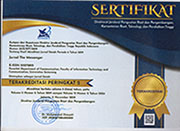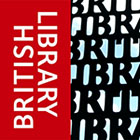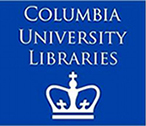Teenagers Entertainment Satisfaction in Watching Talk Show Program through Youtube
Abstract
Keywords
Full Text:
PDFReferences
Bungin, B. (2005). Metodologi Penelitian Kuantitatif. Jakarta: Prenada Media.
Cavalcanti, L. H., Pinto, A., Brubaker, J., & Dombrowski, L. (2017). Media, Meaning, and Context Loss in Ephemeral Communication Platforms: A Qualitative Investigation of Snapchat. CSCW 17 Proceedings of the 2017 ACM Conference on Computer Supported Cooperative Work and Social Computing, 1933 1945.
Haqqu, R., & Hastjarjo, S. (2017). Television Media Convergence On Digital Media In Netgen Generation. Surabaya.
Katz, E., Gurevitch, M., & Haas, H. (1973). On the Use of the Mass Media for Important Things. American Sociological Review, 38(2), 164 181.
Littlejohn, S. W., Foss, K. A., & Oetzel, J. G. (2017). Theories Of Human Communication (7th ed.). Illinois: Waveland Press.
Rakhmat, J. (2009). Metode Penelitian Komunikasi. Bandung: PT. Remaja Rosdakarya.
Rosengren, K. E., Wenner, L. A., & Palmgreen, P. (1985). Media Gratifications Research. Washington DC: Sage Publications Inc.
Severin, W. J., & Tankard, Jr, J. W. (2011). Teori Komunikasi, Sejarah, Metode dan Terapan di dalam Media Massa (5th ed.). Jakarta: Kencana Prenada Media Group.
Sianipar, A. P. (2013). Pemanfaatan Youtube di Kalangan Mahasiswa (Studi Penggunaan Youtube di Kalangan Mahasiswa Ilmu Komunikasi Fisip USU Medan Dengan Pendekatan Uses And Gratification. Jurnal Ilmu Komunikasi FLOW, 3(2), 1 10.
Simamora, E. R. (2016). Spasialisasi dan Konglomerasi Media Pada Kelompok Kompas Gramedia. Jurnal The Messenger, 8(2), 100 111.
Sugiarto. (2003). Teknik Sampling. Jakarta: Gramedia.
Sumartono. (2016). Komodifikasi Media dan Budaya Kohe. Jurnal The Messenger, 8(2), 43 51.
Vivian, J. (2008). Teori Komunikasi Massa. Jakarta: Prenada Media.
Wang, T. L. (2014). The Usage Behaviors, Motivations and Gratifications of Using User-Generated Media: The Case Study of Taiwan s YouTube. Advances in Journalism and Communication, 4(2), 137 150.
Wibowo, F. (2007). Kebudayaan Menggugat. Yogyakarta: Pinus Book Publisher.
DOI: http://dx.doi.org/10.26623/themessenger.v11i1.969
Refbacks
- There are currently no refbacks.
Copyright (c) 2019 Jurnal The Messenger
View My Stats [Jurnal The Messenger] is an International Scientific Journal, Published by the Department of Communication, Faculty of Information Technology and Communication, Universitas Semarang (Central Java, Indonesia). It is licensed under a Creative Commons Attribution 4.0 International License.



_11.jpg)




_BARCODE.jpg)
_BARCODE1.jpg)


5.png)










2.png)





